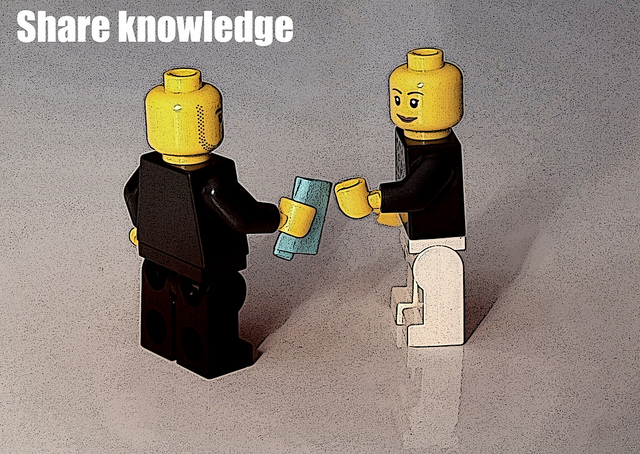 Tacit knowledge is the internalised ‘know-how’ that everyone picks up from working in a particular field. Turning this into explicit knowledge usable by everyone is fundamental to the creative process. How can we use an appreciation tacit knowledge to help our science?
Tacit knowledge is the internalised ‘know-how’ that everyone picks up from working in a particular field. Turning this into explicit knowledge usable by everyone is fundamental to the creative process. How can we use an appreciation tacit knowledge to help our science?
Japanese Beginnings
In the early 1990s observers were beginning to wonder why Japanese technology and engineering companies companies seemed to be performing so much better than their western competitors.
Big Japanese companies such as Canon, NEC and Honda were producing highly innovative, successful products and were able respond rapidly and effectively to technological changes.
A hugely influential paper “The Knowledge Creating Company” published in the Harvard Business revealed that much of the success of these companies was down to their appreciation of tacit knowledge and its interplay with explicit knowledge.
Science and research groups are nothing if not knowledge creators, so is there anything we as scientists can learn from this Japanese approach to knowledge creation?
successful companies [research groups] are those that consistently create knew knowledge, disseminate it widely… and quickly embody it in in technologies and products [science]
Tacit Vs. Explicit Knowledge
Tacit and explicit knowledge are very often encountered in scientific research.
Explicit knowledge is formal and quantifiable such as data, procedures and universal principles. Explicit knowledge is easily shared with others, such as as data presented at a conference, or the standard operating procedure of a piece of equipment.
Tacit knowledge on the other hand is much more subjective. It includes the often subjective insights, intuitions and hunches of individuals. These are understandably more difficult to formalise and communicate to others. Examples from science might be the ‘knack’ for focussing a microscope or the exact procedure for turning on an old piece of equipment that only one person seems to know.
Knowledge Creation

Image: Steve Corey; Some Rights Reserved
For knowledge creation to take place it is essential for there to be an exchange beteen tacit knowledge and explicit knowledge: A genius researcher can have a gut feeling about a phenomenon, but the key knowledge creation stage occurs when he or she is able to communicate this gut feeling to other people and convert it to measurements and hard data.
The Knowledge Creating Company describes four different possible knowledge exchange scenarios:
Tacit – Tacit
Tacit to tacit knowledge exchanges involve on person observing and working with someone who has mastered a particular skill and has internalised bits of know-how along the way.
An example might be if you went off to visit another research group to observe exactly how someone prepares their samples or makes a measurement.
While you are there you pick up on all kinds of subtle movements and adjustments that are difficult to communicate to other people.
Explicit – Explicit
These are situations where exisiting explicit knowledge (e.g data, methods etc.) are combined or prepared in such a way as to produce new knowledge.
For example there might be information about the melting point of crystals spread over many different papers. You could combine these into a systematic comparison of melting points in those crystals.
Tacit – Explicit
A tacit to explicit knowledge exhange happens when someone is able to articulate their own tacit knowledge.
We can imagine a situation where someone who designed and built an experimental system and knew how to use it by ‘feel’ and instict alone: listening to sounds the system made, and turning dials until it felt right, etc.
This tacit knowledge becomes explicit when this person takes it upon themselves to write down and formalise everything they do to run the system.
Explicit – Tacit
As new explicit knowledge is spread throughout a research group or department, other workers will begin to internalise it and use it to broaden their own tacit knowledge base.
Eventually the new explicit knowledge is taken for granted as part of the background of tools and resources necessary to do their job.
The Knowledge Spiral

Image: hawkexpress; some rights reserved
These tacit and explicit knowledge exchanges combine together to create a ‘spiral of knowledge’ in which explicit and tacit knowledge is continually and dynamically exchanged.
One person’s new idea or concept can be articulated and communicated to the rest of the group, where it is internalised and used to alter their own perceptions, and change how they work. New ideas are then created, and the spiral continues.
On a grander scale the whole scientific process is a spiral of knowledge: an individual’s tacit knowledge and gut understanding of a system or a problem is tested and formalised before being added to the body of explicit knowledge in the scientific literature.
How Can Tacit Knowledge Help Science?

Image: Ewa Rozkosz; some rights reserved
Science is about much more than the combining and processing of exising knowledge and data.
To help support your scientific research and the group in which you work, here are some behaviours you might want to encourage, work towards or bear in mind.
1. Capture tacit knowledge in your group
In science the often solitary work done by people and the high student/staff turn-over (research students and post-docs are often on short term contracts) means that it is important to capture as much of their know-how and internalised tacit knowledge as possible.
Converting tacit knowledge to explicit knowledge could take the form of detailed usage instructions, callibration tables or even just lists of the locations of important samples and equipment.
2. Seek out the tacit knowledge of other groups
It is their tricks, know-how, instincts and experience that allow them to carry out experiments where you may fail. Make use of your existing collaborations and make contact with new groups where you can.
If necessary visit the group yourself or send a research student or post-doc to acquire and internalise the tacit knowledge of this other group. Make sure this new tacit knowledge is also converted to explicit knowledge and shared with the rest of the group in some form (see point 1, above).
3. Encourage the discussion of tacit knowledge within your group
Talk about the tricks you use and the know-how you’ve accumulated, and not just the ‘method’ as you might write in a journal article. Others can then begin to acquire and internalise these tricks for themselves, and modify them to suit their own projects and problems.
Further Reading
The Knowledge Creating Company